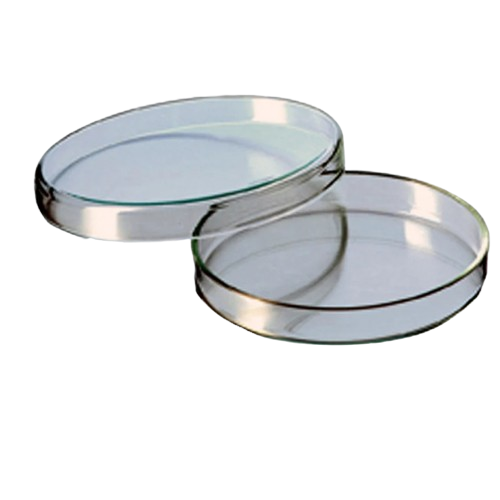Description:
Glass Petri dish is a flat, shallow, cylindrical dish made from glass, commonly used in laboratories for culturing microorganisms or for growing cells.
- Material: Typically made from high-quality, heat-resistant glass (often borosilicate) to ensure durability and resistance to thermal shock.
- Shape and Size:
- The dish is usually round with a flat base and a rimmed top.
- Typical diameter ranges from 60 mm to 180 mm, with 60 mm being common for general use.
- Lid: Many Petri dishes come with a matching lid that helps to prevent contamination and maintain a sterile environment. The lid also helps to reduce evaporation of any liquid medium inside.
- Use in Laboratories:
- Culturing: Petri dishes are mainly used for growing bacteria, fungi, and other microorganisms in a controlled environment. Agar or other nutrient mediums are commonly added to encourage microbial growth.
- Cell Culture: Petri dishes can also be used for growing plant or animal cells.
- Observation: Glass is transparent, allowing for easy visual observation of cultures under a microscope.
- Sterility: Petri dishes must be sterilized, usually by autoclaving, to prevent contamination before use.
- Advantages of Glass Petri Dishes:
- Reusability: Glass can be cleaned and sterilized, making the dishes reusable, unlike plastic alternatives.
- Transparency: Glass provides a clear view of the contents, which is essential for observing growth.
- Heat Resistance: Glass is heat-resistant and can be used in applications involving high temperatures, unlike some plastic dishes.
Handling:
- Care should be taken when handling glass Petri dishes because they can break easily if dropped. Some labs prefer glass dishes for the purity and long-term use, but they are heavier compared to plastic options.
Specification:
Size : 60-180mm
Color: White
Glass: Borosilicate



Reviews
There are no reviews yet.